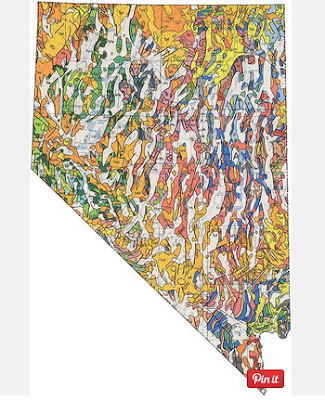We spent the night in Las Vegas. We are now just 30 miles shy of 1,000 miles on the Clampet Mobile since PDXland. We arrived a day earlier than I planned. My schedule had us in LV on the 18th, not the 17th. So now do we spend four nights here before trekking on to Sedona, or four nights in Sedona instead of three? We lean toward the latter.
Did some investigation of the geology of Northern Nevada and found this:
Nevada is unique. Consider the Himalaya region, where two continents are colliding and creating an area of very thick crust. Nevada is the opposite, where a continent is stretching apart and leaving the crust exceptionally thin.
Between the Sierra Nevada to the west in California and the Wasatch Range in Utah to the east, the crust has been extended by some 50 percent over the last 40 million years. In the upper crust, the brittle surface rocks broke into long blocks, while in the hotter, softer lower crust there was more plastic deformation, allowing these blocks to tilt. The upward-tilting parts of the blocks are mountain ranges and the downward-tilting parts are basins. These filled with sediments, topped with dry lake beds and playas in the arid climate.
The mantle responded to the crustal extension by melting and expanding and lifted Nevada into a plateau more than a kilometer high. Volcanism and magma intrusions covered the state deep in lava and ash, also injecting hot fluids in many places to leave metal ores behind. All this, coupled with spectacular rock exposures, makes Nevada a hard-rock geologist's paradise.
Northern Nevada's young volcanic deposits are associated with the Yellowstone hotspot track, running from Washington to Wyoming. Southwestern Nevada is where the most crustal extension is occurring these days, along with recent volcanism. The Walker Lane, a wide zone of tectonic activity, parallels the diagonal border with southern California.
Before this period of extension, Nevada was a convergent zone similar to South America or Kamchatka today with an oceanic plate sweeping in from the west and being subducted. Exotic terranes rode in on this plate and slowly built the land of California. In Nevada, large bodies of rock moved eastward in great thrust sheets on several occasions during Paleozoic and Mesozoic time.




.jpg)
.jpg)
No comments:
Post a Comment